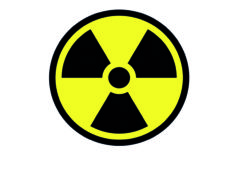
Christopher G Carsten III, Greenville Health System, Greenville, SC, USA
Radiation safety practices have made tremendous advances since the discovery of Roentgen’s X-rays over 120 years ago. The sacrifices of early practitioners have led to the knowledge that now allows us to perform truly amazing therapies to the benefit of our patients. This knowledge, however, can also be beguiling. While we now know how this energy behaves and what we need to do to minimise our risk, we may assume that we have tamed its danger. “Time, Distance and Shielding” are simple concepts, so surely we as skilled and knowledgeable practitioners can easily apply these basic principles on a daily basis and be safe in our occupational environments, correct?
The answer, it seems, is both “yes” and “no”. While our technology continues to improve, our case complexity increases. Aneurysm patients deemed non-candidates for endovascular therapy a decade ago are now routinely treated with fenestrated or branched grafts. Complex tibial interventions have become routine. In addition to increasingly complex case types, our total volume of endovascular therapies continues to rise. The net effect of this is that practitioners run the risk of increasing their annual radiation exposure.
To complicate matters further, we often exhibit less than ideal radiation safety practices. Studies have shown that physicians often forego the basic principles of protecting themselves against overexposure. In a study of cardiology fellows published in 2010, Kim and colleagues found that by the end of their training 76% of cardiology fellows did not always use radiation safety goggles during their procedures.1 Likewise, less than half always wore their dosimetry badges and less than 20% were aware of their total radiation exposure from the previous year. Our own research conducted among vascular surgery residents and fellows in training displayed similar disturbing trends. Of the vascular trainees responding to our survey, nearly 50% received no formal training in radiation safety. These untrained young physicians were far less likely to utilise “As Low As Reasonably Achievable” (ALARA) radiation safety practices.2 This may set the stage for a career of poor performance and increased personal risk.
Early development of poor practice patterns is pertinent because there is mounting evidence that, even with modern technology and practices, chronic radiation exposure to practitioners may have significant health-related effects. Perhaps the most well documented of these is the risk of cataract formation. For many years it has been surmised that, based on available data, cataract formation was a deterministic effect of exposure for which there was an absolute threshold. Below this threshold, the likelihood of cataract formation was felt to be small. This threshold is now being questioned as to its validity. The International Atomic Energy Agency recently published the findings of a study in which slit lamp exams were performed on interventional cardiologists and cardiology techs and compared to age and sex matched controls looking for the formation of lens opacities.3 Researchers found that 50% of the cardiologists and techs displayed some evidence of cataract formation compared to 20% of the controls. Numerous other studies echo this finding and call into question the previously accepted threshold dose. Based on this accumulation of data, the International Commission on Radiological Protection revised its recommendations on the lifetime eye dose threshold decreasing it from 2,000 milliSieverts for acute exposure and 4,000–5,000 milliSieverts for chronic exposure to 500 milliSieverts for both. It also recommended an adjustment to the annual lens exposure from 150 milliSieverts to 20 milliSieverts. This is a dramatic change that has yet to be universally adopted by regulatory agencies but has significant implications for all practitioners.
There is also increasing attention on reported brain tumours among interventionalists. Although this number is incredibly small compared to the total number of fluoroscopists, reports are accumulating. Ted Diethrich is one example of a well-known physician drawing attention to the need for increased awareness. His personal experience with cataracts, a calcified carotid plaque and most recently a brain tumour has garnered international attention.
There are studies that offer some reassurance. For example, large databases appear to confirm that the overall risk for malignancy development among interventionalists does not seem to be significantly greater than for the general public. Also, and perhaps the most encouraging aspect of radiation safety, is that education has been shown repeatedly to make a difference. Melissa Kirkwood and her colleagues from Dallas, USA, have shown that after implementing an educational program on radiation safety, doses for complex endovascular procedures decreased.4 Likewise, the previously mentioned surveys given to cardiology fellows and vascular surgery fellows validate that educated physicians display better radiation safety habits than those without any formal radiation safety training.1,2
So how much do we have to worry? That depends. What are your radiation safety practices? “Medice, cura te ipsum.”
- Kim C, Vasaiwala S, Haque F, Pratap K, Vidovich MI. Am J Cardiol 2010; 106: 125–28.
- Bordoli SJ, Carsten CG, Cull DL, Johnson BL, Taylor SM. J Vasc Surg 2014; 59: 860–4.
- Ciraj-Bjelac O, Rehani M, Minamoto A, Sim KH, Liew HB, Vano E. Cardiology 2012; 123: 168–171.
- Kirkwood ML, Arbique GM, Guild JB, et al. J Vasc Surg 2013; 58: 715–21.
Christopher G Carsten III is a vascular surgeon at the Greenville Health System, Greenville, South Carolina, USA







